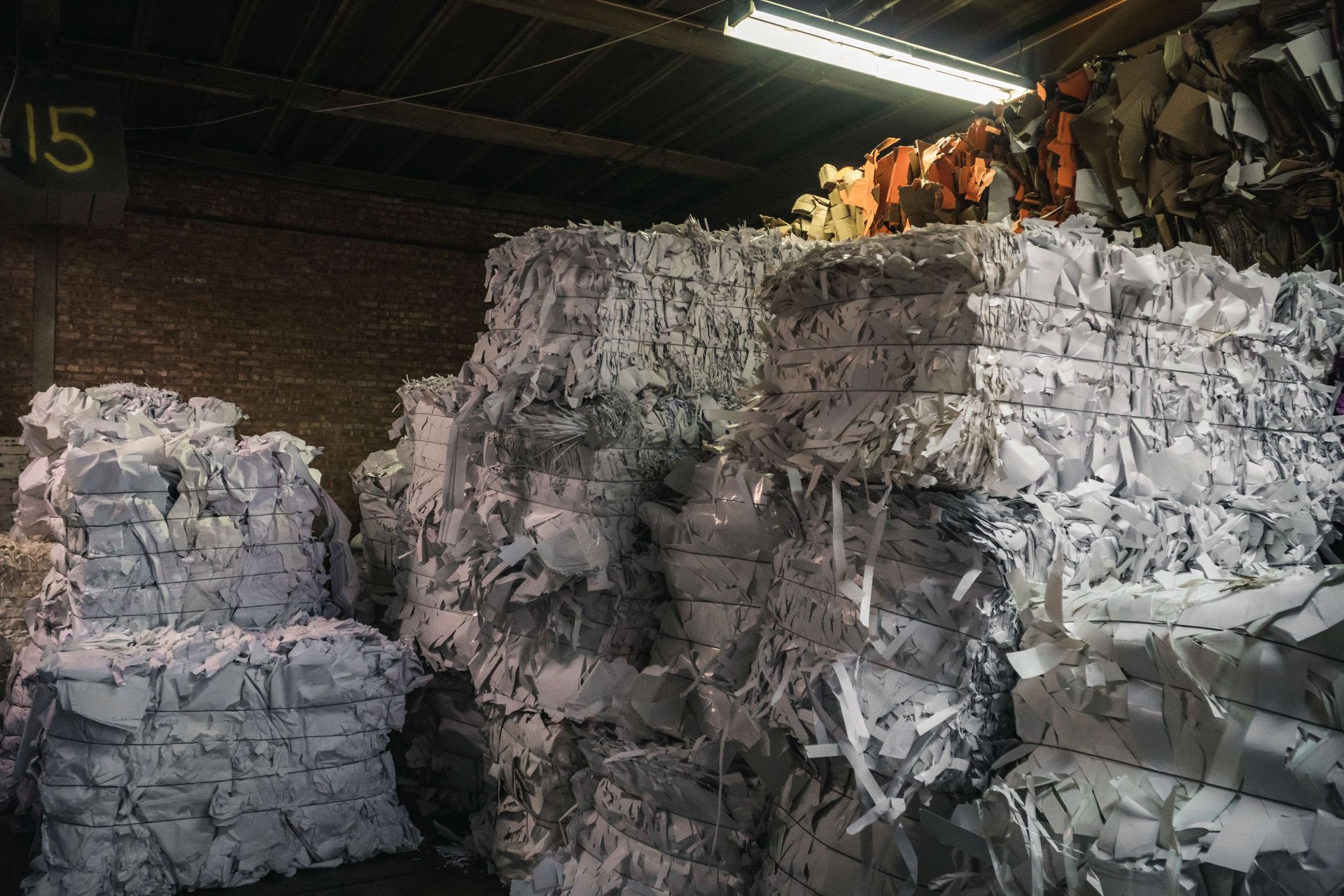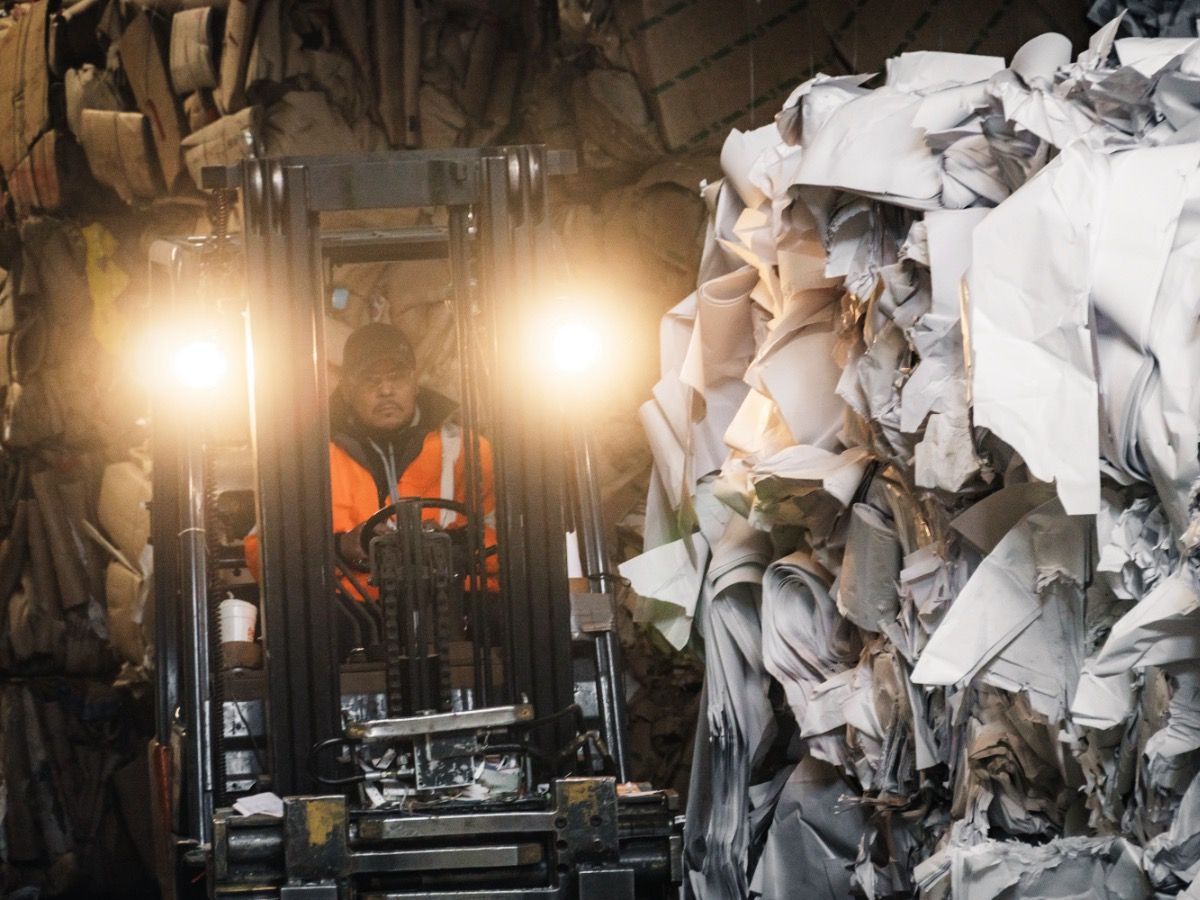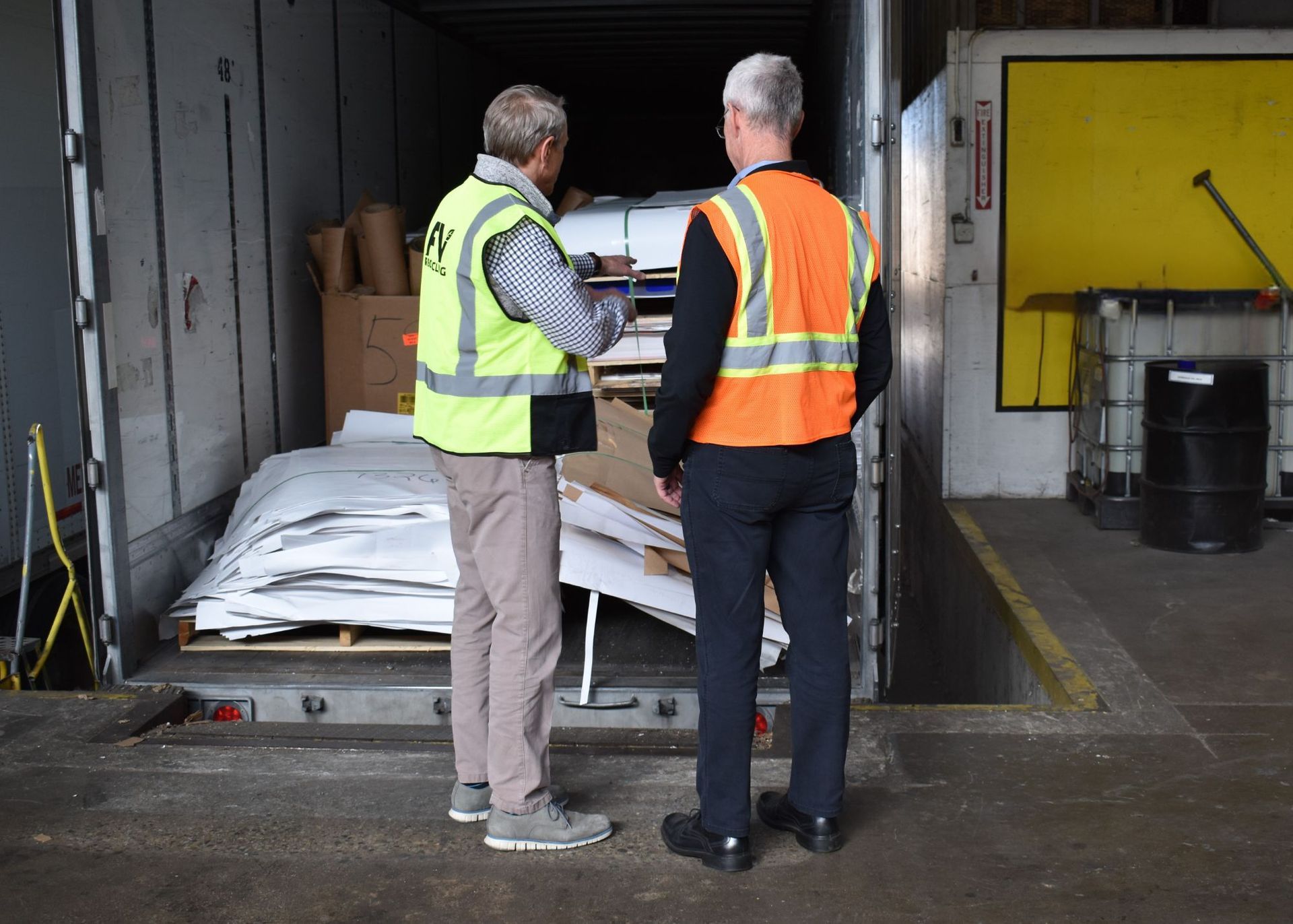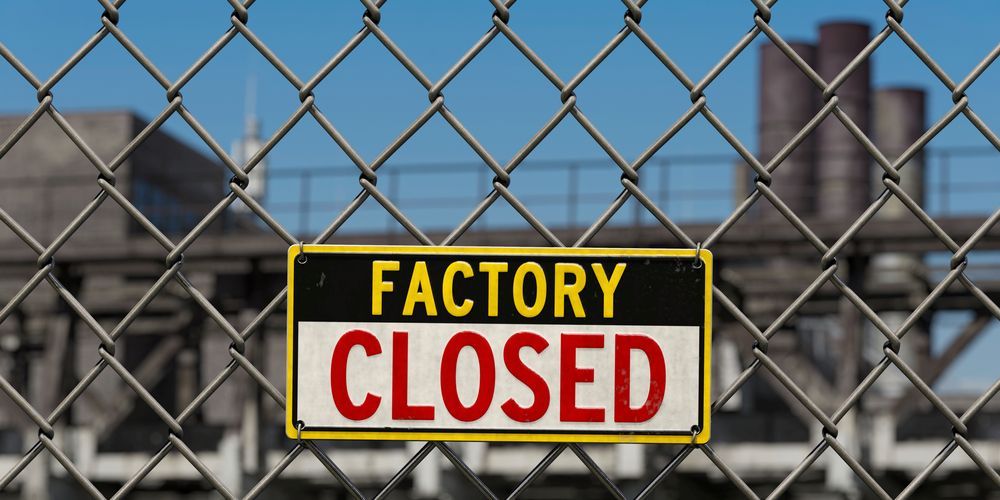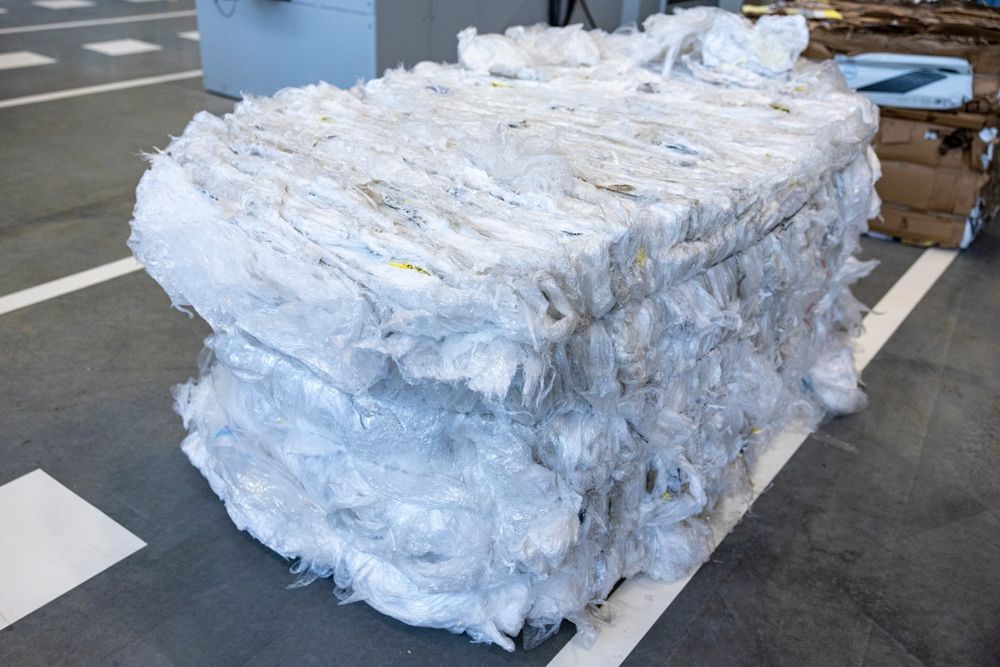Wired for Baling
Without compacting recycled material into dense, easily stacked bundles, recyclers might not be able to move their materials easily and cost effectively. That’s why most recyclers use baling systems. A baler can be used in most secondary commodity markets, including paper, cardboard, plastic, and ferrous and nonferrous metals and some plastics. Recycling equipment like a baler helps efficiently organize, store, and prepare scrap for recycling.
Perhaps just as important is the baling wire used to tie and secure the bales. Baling wire safely and neatly secures bales of recyclable material before it is moved on through the recycling process, preventing the bales from coming apart.
Baling wire may be taken for granted, but it’s essential and vital to the entire recycling process.
A plethora of types
There are a variety of different types and styles of baling wire used in the industry, and various prices to go with them. Some have black annealed finishes and others have galvanized or corrosion-resistant finishes, depending on the need and application. A coating may be used to adjust the surface properties of the wire to guard against corrosion, improve aesthetic appearance, and improve adhesion. Wire thicknesses and diameters are available in a range (typically 10, 11, 12, 14 and 14.5 gauges), and are selected based on the materials with which the wire will be used.
It’s important to consider your specific application when choosing the type of wire you need, emphasizes Jason Ramsey, President of Crawfordsville, Ind.-based Midwest Bale Ties, a leading manufacturer of bales ties and baling wire in the Midwest. Family-owned and operated, Midwest Bale Tie provides an assortment of quality wire products made from the best American-made raw materials. Its products are made from 100-percent U.S. steel, in 8- to 22- ft. lengths, and custom lengths.
“There are basically three types of baling systems: vertical or horizontal manual balers, auto-tie balers and two ram balers,” Ramsey says. “Each requires a different wire product. Manual balers use single-loop bale ties, auto-tie balers take 50- or 100-lb. coils of wire and two ram balers require high tensile baling wire on a stem/stump.”
Often coated in zinc to provide excellent cathodic protection, galvanized wire is sometimes referred to as “clean wire,” and tends to be a preferred choice because it resists corrosion and outdoor storage conditions. Black annealed wire is quite pliable, which is convenient when some baled materials re-expand after unloading from the baler, so having a little extra flexibility can help prevent the wire from failing. Lightly coated with oil to resist corrosion, black annealed wire works well indoors but can sometimes rust when the bales are used and stored outdoors. “It’s important to consider your specific application when choosing the type of wire you need,” Ramsey adds.
There are also low, medium and high carbon versions, and wire with uniform strength and elasticity, which reduces breakage and machine downtime. When the wire is produced via a metal drawing process, its properties change in terms of strength, ductility, fatigue, and shape. The combination of these elements results in a broad range of products.
Having the right size and specifications allows the customer to not over buy too large a size, Ramsey explains. “Baling wire is priced by weight. If a customer has too small of a product, they may have to use more of the lighter ties, which could be economically inefficient.”
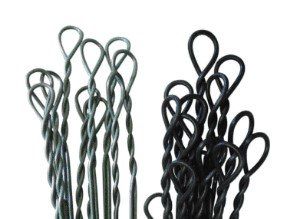
Single-loop baler wire
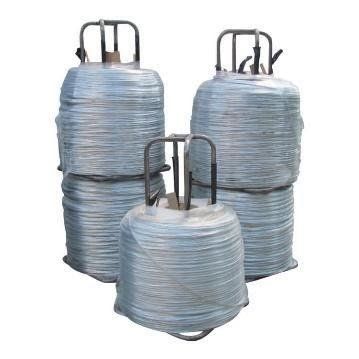
Stump and stem wire
Quality and pricing
Ramsey cautions that not all wire is not created equal. “Wire is sourced from many different countries and continents, and the quality of any bale ties and/or baling products starts at the steel mill. How that steel it is treated throughout the forming process will make or break the product.”
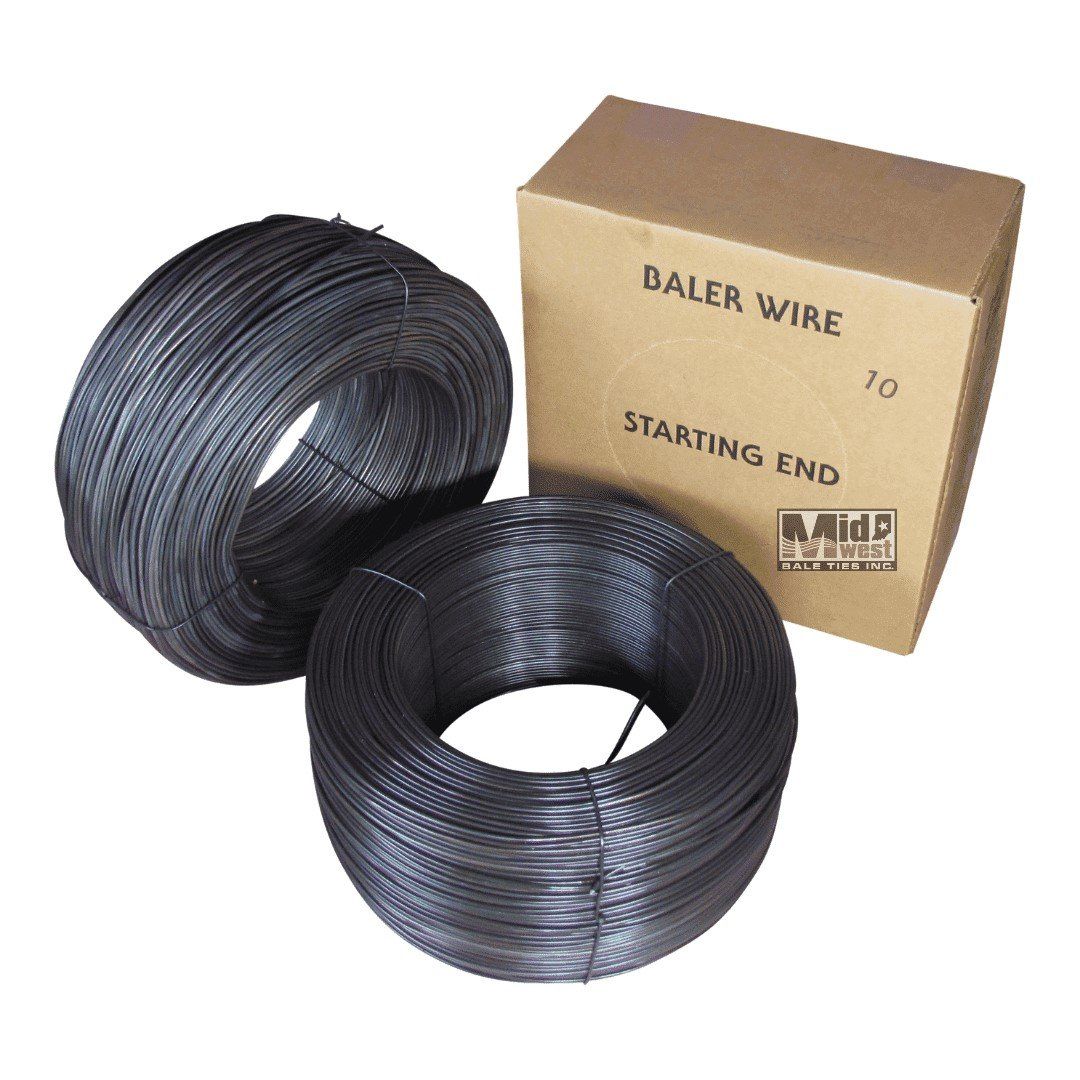
So, what should buyers look for in terms of quality? American-made bale ties undergo stricter quality control standards than wire from other countries, and tends to be more durable. “Wire consistency is probably the best datum for quality,” Ramsey mentions. “If the wire has hard spots, that’s usually a result of a lower quality material, and it can break rather than stretch when being wrapped around a bale. This holds true for manual, auto-tie or two-ram baling.”
Another aspect is bale density. Density and bale sizing are important because they directly affect the use of baling wire. The old adage goes, the bigger the baler cylinder, the more the force, and consequently, the denser the bales. Bigger cylinders provide a denser, heavier bale, and yield fewer bales. That means less wire is used and there is less material handling, wear and tear, and semi loads to transport.
The baler also must use the proper number of wire ties – that number varies depending on the type of material being baled. If excessive wire is being used, wire costs could skyrocket. Many companies are now managing their wire through their baling machines’ automated tying features, which set the correct number of wires and spacing to properly tie off the bale.
Evaluate your baler wire
Thus, it’s wise to evaluate your bale ties and baler wire as part of your next waste audit. As Mid America Paper Recycling points out, if waste is compacted into neat bales before being sent to a sorting facility, it has a better chance of being sold for a profit. Wire ties securing those bales into safer, more easily sold units, allow them to be conveniently transported and reused, says Mid America President Paul Pirkle. “Baler wire is critical to a recycler or generator. Without it, the entire process stops at not only the generation spot but also with logistics to those that are producing tissue and toweling products and packaging materials. The greater the quality of baling wire, the higher the bale integrity, and better the movement of material through the logistics network.”
Specializing in customer service, Mid America Paper Recycling offers baling wire for sale and can recommend baling equipment tips, models, and other recycling equipment, tools and supplies. Available to answer any questions or address concerns, we would love to help provide you with additional baling assistance. Contact us today to boost your sustainable business (773- 890-5454).
